Parmesan Pea Spread
A springy recipe from — and Q&A with — cookbook author, food stylist, and wood turner Suzanne Lenzer
A few weeks ago, I shared my Radicchio, Beet, and Fennel Salad with you, and included a photo of some of my favorite bowls in the post. I didn’t go into detail on what the bowls were or where I got them (what was I thinking?), but when one curious reader asked me more about them, I referred her to my friend Suzanne Lenzer, a fellow food stylist and cookbook author who spends part of her time turning beautiful wooden bowls, including the ones shown above.
As you can probably imagine (or maybe you can’t), I’ve amassed quite the collection of bowls. I do so many projects at home — like shooting my new book and this newsletter — so I need to have a nice variety of props on hand. I find you need just the right bowl to set off any particular dish or salad. I favor low, wide bowls both for serving IRL and for photography, because the shape lets you show off the different ingredients to their best advantage. If I make a composed salad in this type of bowl, it’s easy to serve a little of everything without having to toss it all together.
I saw that Suzanne was experimenting with shou sugi ban, which is the Japanese process of burning and charring wood. This method has practical applications because the process preserves the wood, making it stronger, water resistant, and insect resistant — all great advantages when used as siding for a house. The finish is also absolutely beautiful; dark as ebony and textured with deep grain marks. I asked her if she could make me a shou sugi ban bowl with a food-safe finish and she did. It exceeded my expectations and of course I used it in my book. (You’ll see! And by the way if you haven’t pre-ordered yet, please do!)
That curious reader I mentioned above? She reached out to Suzanne to buy some bowls, and it turned out they live very close to each other, so Suzanne hand-delivered them! I love when the stars align like that! Ros, I hope you’re enjoying your bowls.
For the rest of you, I thought you might be interested in this interview I did with Suzanne, as well as a springy recipe from her cookbook, Graze: Inspiration for Small Plates and Meandering Meals. Given that she’s a food stylist and cookbook author, I was genuinely curious about how she started making bowls, and find her multifaceted creativity inspiring. I think you will too! Here’s a video to give you a visual of her bowl-making process.
Keep scrolling for a recipe for her Parmesan Pea Spread, which I think would make a perfect appetizer for spring entertaining. And be sure to check out the site for Sawdust Studio & Turnery, through which she sells her bowls. Prompted by our back and forth, she recently updated her website, so you’ll find plenty of available items, but if you see something you like that’s sold, please inquire! She may have something similar or may be making more soon.
Suzanne has also shared a discount code with us to use for her lovely bowls! Use code SUSANALITY at check out to get 10% off your order.
Q&A with Suzanne Lenzer
SS: Did you have another career before becoming a food stylist? So many people in this industry did something completely different before styling. What led you to this career?
SL: I started out in advertising as a copywriter and eventually a creative director, but I’d always really wanted to cook — I actually moved to London after college with the intent of working in a kitchen and, as so often happens, ended up waitressing instead. In some ways I wish I’d found my way to food as a profession earlier, but at the same time, my years spent in a more traditional, corporate yet still creative environment really has helped me as food stylist. Knowing how to work collaboratively with clients and how production works from my previous life made the transition so much easier. And I think I’m more grateful to have a job I love having had that previous life. I was also incredibly lucky in that after culinary school I worked for years with Mark Bittman, the NY Times columnist and cookbook author. He taught me a ton about recipe development and food writing and his mentorship definitely guided my approach to all things food related.
SS: You wrote a book called Graze that I’m going to say started a trend in “food on boards” books. Would you agree, and can you tell us briefly why you wanted to write this book?
SL: As an eater, I’ve always loved grazing and sharing; selfishly I always want to have a taste of everything! Whether it’s on a board or small plates or just standing in the kitchen picking at a few scattered bits and pieces, I think it’s such an enticing way to approach food. And I realized from cooking for friends, that putting out a bunch of different bites made everyone happy and was, frankly, often less work. It just made sense that if I loved to eat this way — and especially entertain this way — others would too. So while the book is about how to shop and put a few different ingredients together on a board or platter, it’s also about how to make recipes that are well suited to sharing. In terms of starting a trend, I’m flattered that you think that!
SS: Let’s talk about bowls. What led you to start making bowls (and other wooden pieces)?
SL: I used to be a potter; there was a small pottery studio near my house in New York City and I was just passionate about the wheel and making bowls. But then we bought a little cottage in Connecticut and my husband became a really accomplished woodworker and furniture maker. Suddenly I was without a pottery studio and just hanging around his workshop helping. A friend suggested I take a turning class at an art school near us and I went for a weekend workshop and was immediately smitten. I fell in love with the idea of creating something so useful from found wood (I work off salvaged logs only) and am just besotted by different kinds of timber; the feel, patterning, scents, it’s all so different and amazing. I love the femininity of bowls too — there’s something sensual about them. I joke that my bowls are female because they usually end up with hips! That said, Ken and I work together on some pieces — we use some of my scraps to make boards and salt cellars and other pieces and that’s lovely because it really is using the entire log; I think of it like nose-to-tail cooking for wood.
SS: Tell me a little about your philosophy of woodworking. How and where do you source your wood?
SL: I find the idea of working with local, salvaged wood creatively stimulating as well as appealing in terms of sustainability. Every single log is different depending on what kind of wood it is, how old it is, how long it’s been out in the elements. I work with green wood, meaning it’s not kiln-dried, and this encourages natural warping and shape-shifting during the drying process, which I love. It makes each piece unique. I also find the natural imperfections of spalting (fungus in the wood) and knots and other of Mother Nature’s markings just delightful.
SS: Explain shou sugi ban, and how you became interested in it?
Shou sugi ban is a Japanese method of wood preservation where the wood is burned and washed. I use mostly sassafras and oak for this process as they have really great grain patterns. Once I’ve turned a bowl or platter, I then use my torch to char it — I burn it as far as I dare without actually destroying it — and it not only raises the grain so you get a really great texture, but it leaves char markings and other irregularities behind as well that are really stunning. And the color! You get this rich ebony color that I find it both really contemporary and ancient all at the same time. I first got interested in it for that truthfully — I wanted to find a natural way to make some very striking pieces that were even darker than black walnut, almost lacquered looking, and I’d read about Japanese woodworkers using this method for centuries.
SS: How does being a food stylist influence your pieces? Do you think about how food will look in your bowls and on your boards as you conceive of them?
SL: I’m embarrassed to say I don’t think too much about that beyond knowing what kinds of wood I like to work with. Walnut, cherry, and maple are my favorites because they’re so great for food. And I suppose I do think about depth and shape — salad bowls versus platters. But I really do let the wood tell me what it wants to be. It’s very organic that way.
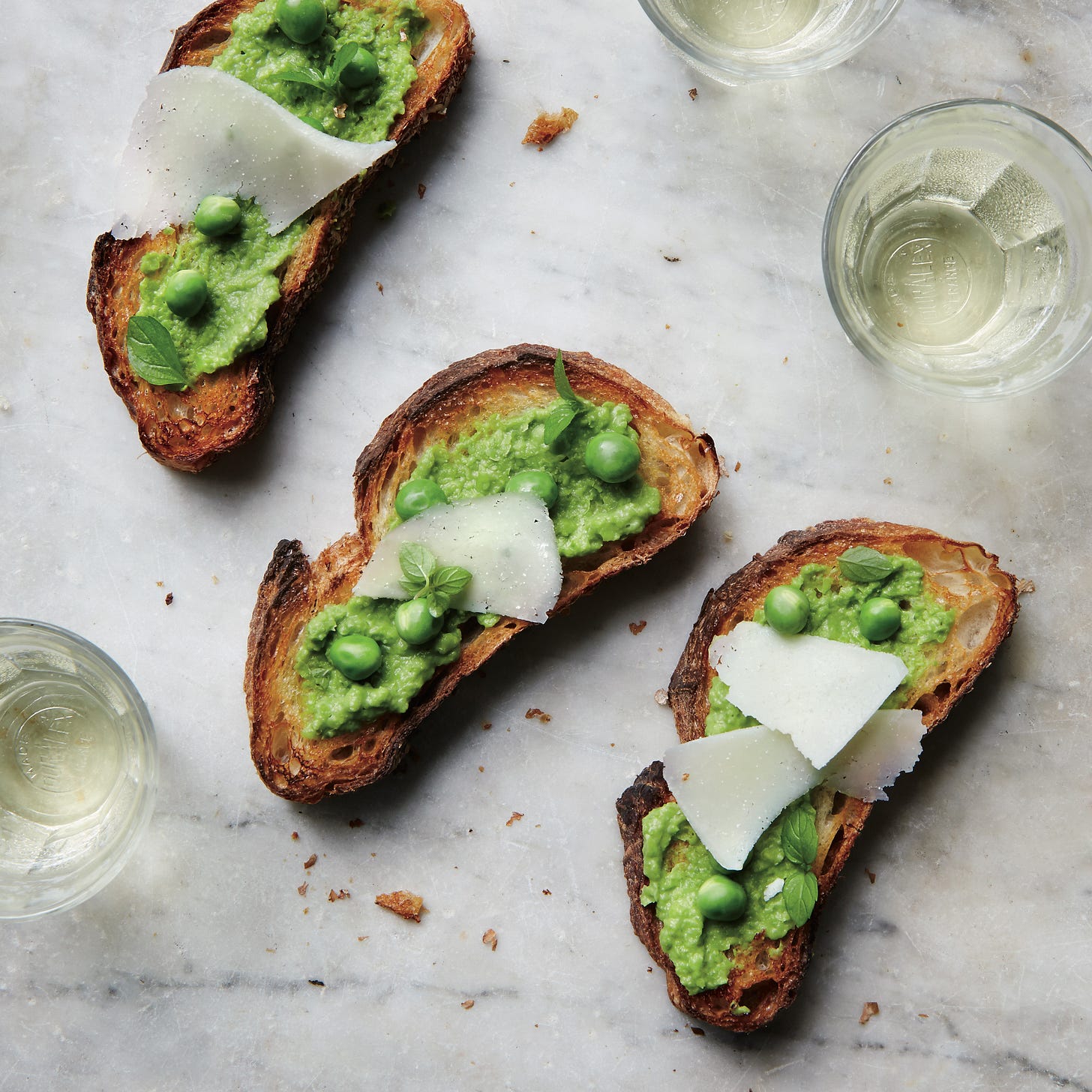
Parmesan Pea Spread
From Graze by Suzanne Lenzer
Makes roughly 2 cups
I love this incredibly simple, vibrantly green springtime spread — it works brilliantly as a topping for crostini, but it’s also a workhorse for last minute entertaining. I use it as the base for Risi e Bisi, a lovely green risotto, or I serve it in a bowl with taralli or crackers like a dip. And I’m not shy about saying I use frozen peas sometimes; having a bag of them in the freezer can be a lifesaver, I find. —Suzanne Lenzer
4 tablespoons (1/2 stick) unsalted butter, at room temperature
1 tablespoon minced shallot (about 1/2 shallot)
2 cups fresh or frozen peas
1/2 cup chicken stock
1/2 cup freshly grated Parmesan cheese, or more to taste
Sea salt and freshly ground black pepper
Fresh mint leaves, for garnish
In a large saucepan, melt 2 tablespoons of the butter over medium heat. Add the shallot and cook until just soft, 3 to 4 minutes. Add the peas and swirl them around in the butter until nicely coated, then increase the heat to medium-high and add the chicken stock. Bring the stock up to a simmer and cook the peas until they’re tender but still bright green, no more than 2 or 3 minutes for frozen peas, and about 5 minutes for fresh.
Carefully transfer the pea mixture to a food processor and add the remaining 2 tablespoons butter and the Parmesan. Puree the mixture until smooth. Season with salt and pepper and adjust the seasoning as needed (more cheese if you like).
I serve this spread on toasted bread with a mint leaf and another good shave of cheese, but if you like the idea of adding mint into the puree feel free to add a few leaves into the mix; just be cautious as the mint can overpower the delicate sweetness of the peas if you have a heavy hand.
Editor: Molly Ramsey

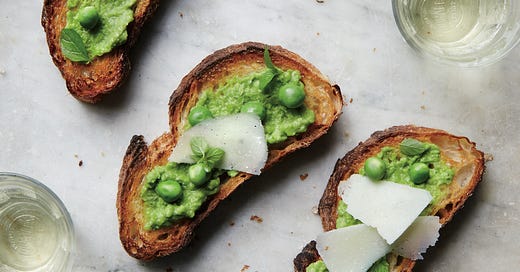


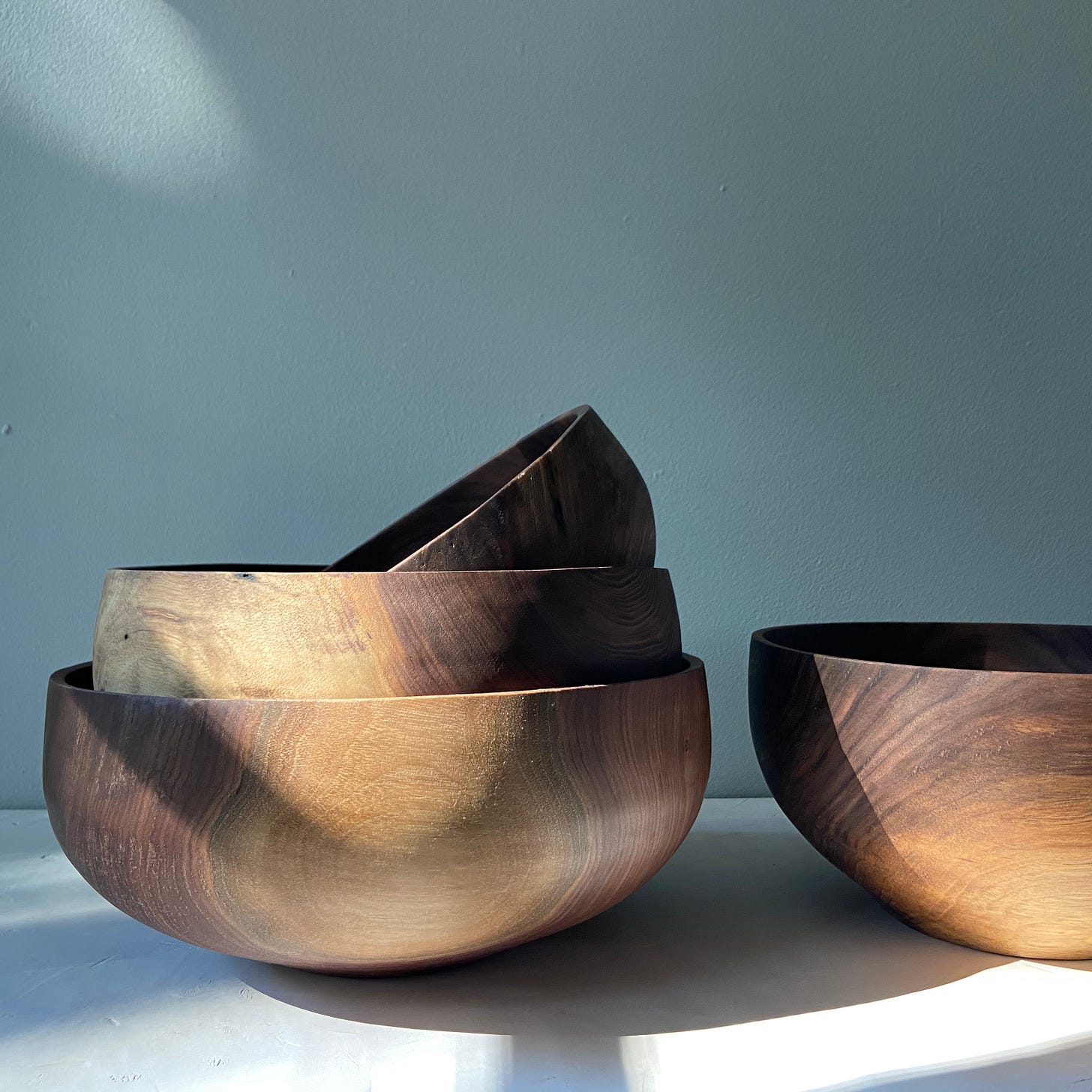
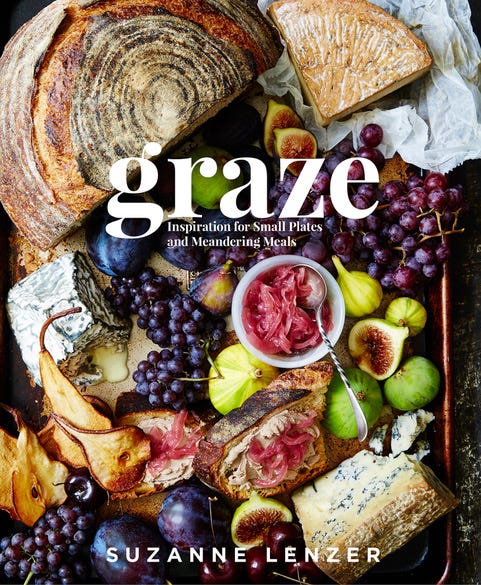
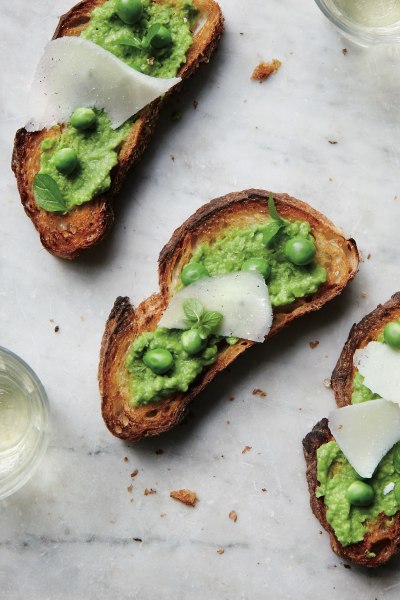
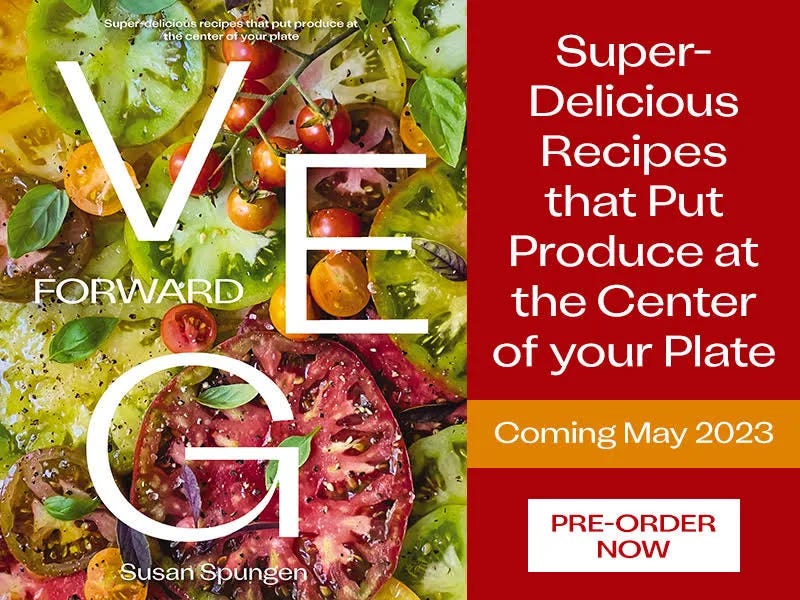
I so enjoyed this post and especially the interview with Suzanne. Thank you for shining a light on her work and her creative process!
Parm + peas for life! Also, I’m inspired. We have all the turning tools in our workshop (Andras’), but I’ve been too timid to use them myself. Maybe it’s time to change that...